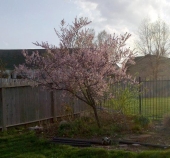
 3
3




“All good things are wild, and free.” Henry David Thoreau
 10
10




"Study books and observe nature; if they do not agree, throw away the books." ~ William A. Albrecht
 5
5




James 1:19-20
Not all those who wander are lost - J. R. R. Tolkien
 2
2




Visit Redhawk's soil series: https://permies.com/wiki/redhawk-soil
How permies.com works: https://permies.com/wiki/34193/permies-works-links-threads
 3
3




A build too cool to miss:Mike's GreenhouseA great example:Joseph's Garden
All the soil info you'll ever need:
Redhawk's excellent soil-building series





 4
4




“All good things are wild, and free.” Henry David Thoreau
 2
2




Not enough info - did they fall away from the hugel berm or toward? Was the storm that toppled the tree significantly above average force?I did construct hugel berms uphill of each tree on contour to keep them hydrated - is it possible they were TOO effective?
Visit Redhawk's soil series: https://permies.com/wiki/redhawk-soil
How permies.com works: https://permies.com/wiki/34193/permies-works-links-threads




“All good things are wild, and free.” Henry David Thoreau
 1
1





Striving to grow things as naturally, simply, and cheaply as possible! 
My YouTube channel
 3
3




Visit Redhawk's soil series: https://permies.com/wiki/redhawk-soil
How permies.com works: https://permies.com/wiki/34193/permies-works-links-threads
 2
2




“All good things are wild, and free.” Henry David Thoreau
 1
1




Visit Redhawk's soil series: https://permies.com/wiki/redhawk-soil
How permies.com works: https://permies.com/wiki/34193/permies-works-links-threads
 2
2




“All good things are wild, and free.” Henry David Thoreau
 2
2




Jay Angler wrote:If you don't think the roots are too wet, but think the soil might be poor, the same idea works - dig some holes 5 ft or so from the trunk and put some compost/chopped and dropped weeds/urine/etc in the holes so the roots will go searching.
 1
1




Visit Redhawk's soil series: https://permies.com/wiki/redhawk-soil
How permies.com works: https://permies.com/wiki/34193/permies-works-links-threads




“All good things are wild, and free.” Henry David Thoreau
 1
1




Standing on the shoulders of giants. Giants with dirt under their nails
 2
2




Mediterranean climate, hugel trenches, fabulous clay soil high in nutrients, self-watering containers with hugel layers, keyhole composting with low hugel raised beds, thick Back to Eden Wood chips mulch (distinguished from Bark chips), using as many native plants as possible....all drought tolerant.
 1
1




Mediterranean climate, hugel trenches, fabulous clay soil high in nutrients, self-watering containers with hugel layers, keyhole composting with low hugel raised beds, thick Back to Eden Wood chips mulch (distinguished from Bark chips), using as many native plants as possible....all drought tolerant.
 5
5




“All good things are wild, and free.” Henry David Thoreau

 4
4




Some places need to be wild
 1
1




Is this a grafted tree? If it's grafted on "miniature" root stock, some of those trees are designed to be babied their entire life.
![Filename: DWARFPLUM-1.jpg
Description: [Thumbnail for DWARFPLUM-1.jpg]](/t/113420/a/105978/DWARFPLUM-1.jpg)
![Filename: DWARFPLUM-2.jpg
Description: [Thumbnail for DWARFPLUM-2.jpg]](/t/113420/a/105979/DWARFPLUM-2.jpg)
Creating edible biodiversity and embracing everlasting abundance.
 1
1




My understanding is that many "dwarf" trees are regular trees that are grafts onto a different plant's roots that will limit the uptake of water and nutrients to keep the tree small in size, but still producing lots of fruit. These trees make up the "modern industrial orchard" where every tree is staked, pruned and nutritionally controlled. They are sometimes appropriate for a specific location - I bought an espalier Asian pear grafted with several varieties as a treat that is in a spot where I can give it a little care and where a larger tree would put shade where I didn't want it. I've still managed to treat it more "permaculturally" by planting wood up slope from it to hold water and adding comfrey as a chop and drop companion.So they're not even real dwarfs but flimsy giants, you have to prune them lots and otherwise they'll break, what a dud.
Visit Redhawk's soil series: https://permies.com/wiki/redhawk-soil
How permies.com works: https://permies.com/wiki/34193/permies-works-links-threads

|
It's good to want things. Want away. Want this tiny ad.
Rocket Mass Heater Resources Wiki
https://permies.com/w/rmh-resources
|




